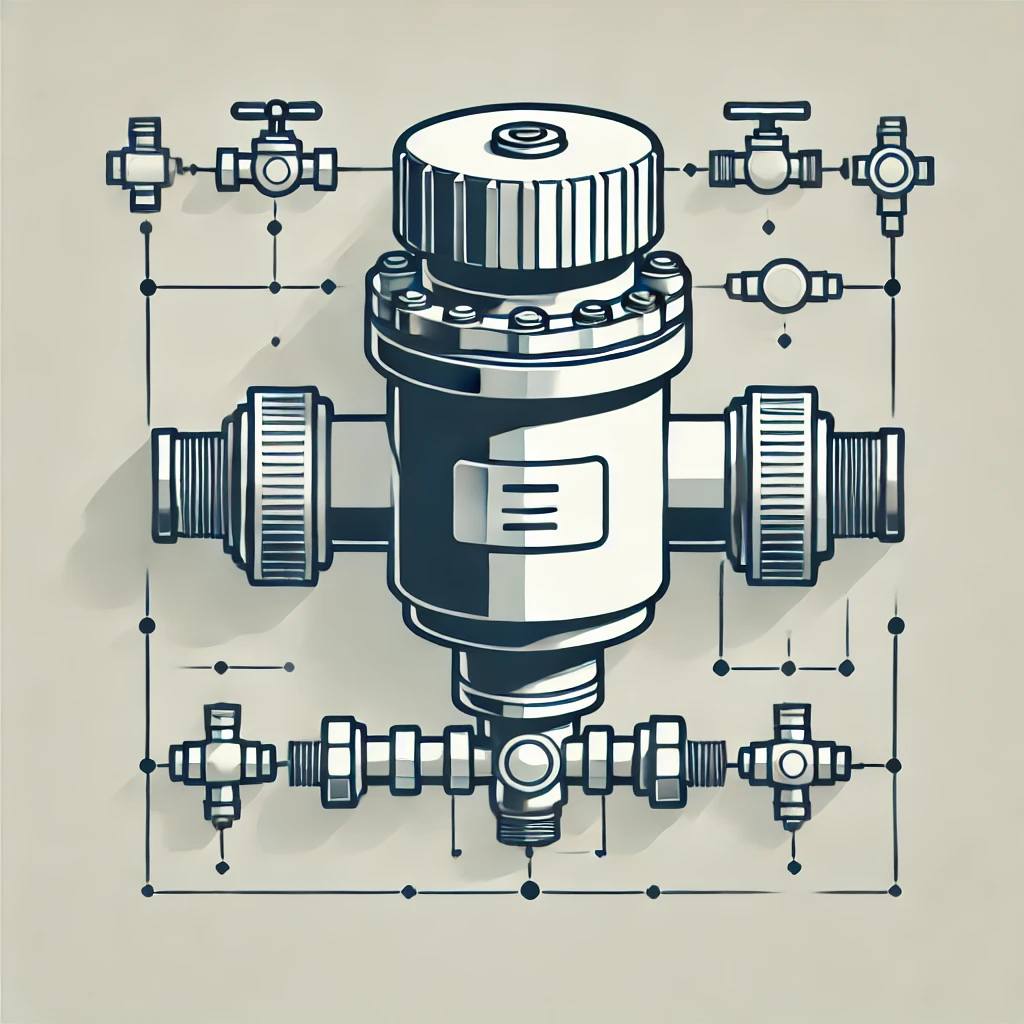
What is Backflow Prevention and Why is it Important?
Ever wondered what backflow is and why it’s such a big deal? Imagine turning on your tap and getting a mix of clean water and potentially harmful contaminants. That’s backflow in action, and it can seriously degrade your water quality. Contaminated drinking water is a major health risk, with the World Health Organization (WHO) reporting over 485,000 deaths annually due to waterborne diseases like diarrhea and cholera. So, keeping your water supply safe from backflow is absolutely necessary.
Install Backflow Prevention Devices
Let’s talk defense. The first step in battling backflow is installing backflow prevention devices. These gadgets are your water supply’s security guards, stopping contaminants from sneaking in. Here are three common types:
- Atmospheric Vacuum Breaker (AVB): Simple, cost-effective, and perfect for outdoor faucets and irrigation systems where water pressure isn’t constant.
- Double Check Valve Assembly (DCVA): This device offers reliable protection for low to medium hazards. It’s great for both underground and indoor installations.
- Reduced Pressure Zone (RPZ) Valve: Known for offering the highest level of protection, RPZ valves are used in high-risk areas to keep contaminants out of your potable water supply.
The Environmental Protection Agency (EPA) highlights the importance of backflow prevention devices in keeping public health intact by blocking contaminants from entering the water supply through cross-connections.
Regular Testing and Maintenance
Installing these devices is just the beginning. To keep them in top shape, regular testing and maintenance are necessary. Annual testing, recommended by the American Water Works Association (AWWA), involves inspecting the valves and checking for any leaks or defects. Maintenance includes cleaning the devices and replacing any worn-out parts.
Research shows that regular maintenance and timely repairs can reduce backflow incidents by up to 30%, keeping your water supply clean and safe.
Avoid Cross-Connections
Cross-connections are like open invitations for contaminants. These occur when there’s a direct link between your potable water and potential contaminants. Common sources include garden hoses left submerged in pools, irrigation systems without backflow prevention, and improperly installed sprinkler systems. To avoid these, always use backflow prevention devices and regularly inspect your plumbing systems.
Educate Your Household or Employees
Knowledge is power. Make sure everyone in your household or workplace knows about the signs of backflow, such as discolored water, strange odors, or a sudden drop in water pressure. Encouraging regular reporting of any issues can help catch and fix backflow problems early.
The Centers for Disease Control and Prevention (CDC) emphasize the role of public awareness in preventing waterborne diseases, suggesting that informed communities are better at maintaining safe water supplies.
Implement Proper Lawn and Garden Care
Improper irrigation practices can lead to backflow. Here are some specific steps to prevent it:
- Use Hose Bib Vacuum Breakers: These devices prevent contaminants from entering the water supply through garden hoses. Install them on all outdoor faucets.
- Avoid Submerging Hoses: Never leave a hose submerged in a pool, pond, or bucket. Doing so creates a direct cross-connection, allowing contaminants to flow back into your water system.
- Install Anti-Siphon Devices: These can be attached to sprinkler systems to prevent water from being siphoned back into the supply line.
- Regularly Inspect Irrigation Systems: Check for leaks, broken heads, and other malfunctions that could cause backflow. Repair any issues promptly.
- Properly Maintain Sprinkler Systems: Adjust sprinkler heads to ensure water is not pooling around them, which can create a backflow hazard.
Proper lawn and garden care can significantly reduce the risk of backflow, contributing to overall water safety.
Maintain Your Plumbing System
Regular plumbing maintenance is perhaps the most important way of preventing backflow. Here are some detailed steps:
- Fix Leaks Promptly: Leaky pipes and faucets can lower the pressure in your water system, increasing the risk of backflow. Address leaks as soon as they are detected.
- Replace Faulty Valves: Valves that do not close properly can allow contaminants to enter your water supply. Regularly inspect and replace faulty valves.
- Install Water Hammer Arrestors: These devices reduce pressure surges that can cause pipes to burst or valves to fail, both of which can lead to backflow.
- Upgrade Old Pipes: Older pipes can corrode and crack, creating entry points for contaminants. Consider upgrading to modern, corrosion-resistant piping.
- Regular Professional Inspections: Have a licensed plumber conduct regular inspections to identify and fix potential issues before they become major problems.
- Comply with Local Plumbing Codes: Make sure all plumbing work meets current local codes and standards. This includes the installation of backflow prevention devices where required.
According to the AWWA, up-to-date plumbing systems are less likely to experience backflow issues.
Contact Water Worx
Keeping backflow at bay is key to protecting your water supply and the health of your family and your community. Water Worx is here to help you with all of your backflow questions and service needs in The Triangle. Conveniently based in Clayton, NC, the plumbing and water utility experts here at Water Worx are standing by to respond quickly and work efficiently to keep your water supply consistently clean and pure.
Call 919-917-7579 or contact us online for professional backflow preventer installation and maintenance in the Clayton, NC, area.